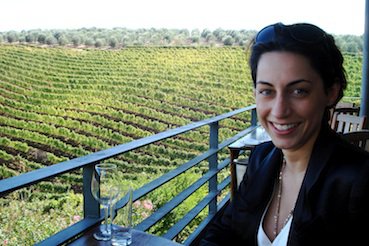
Today I bring you an interview with Domantas Užpalis, a bean-to-bar chocolate maker from Lithuania who contacted me a few months ago to tell me about his project, Chocolate Naive: he and his team roast, winnow, grind and temper their own chocolate in a manufacture based in the Lithuanian countryside.
He offered to send samples of their new collection, which includes a 43% milk chocolate, a 68% Uganda chocolate with fleur de sel, a 71% Grenada chocolate, and a 63% cinnamon-orange chocolate. I received the bars, tasted them, and was truly impressed: this was excellent chocolate, complex and refined. I was also wildly intrigued by the story behind it, and asked Domantas if he would answer a few questions for me.
It turns out this self-described chocolate lunatic is quite a character, and I hope you enjoy reading about his chocolate-making adventures as much as I did. I know I would love to fly to Lithuania and visit his dacha and chocolate factory!
And if you want to taste his chocolate too, it is distributed in select stores in Europe, and can be ordered from the Chocolate Naive website.
Can you tell us a little about yourself and your background?
My name is Domantas Užpalis — blue-eyed, medium height, big smile. Seriously, I am the founder of this weird project called Chocolate Naive. We have been manufacturing fine chocolate in the middle of nowhere for one and a half years now. We are small-scale chocolate makers, who create chocolate from scratch, and by that I mean we roast, winnow, conche and temper chocolate ourselves in the countryside, in Lithuania. I will add that, at this very moment, I live the dream!
What sequence of events inspired you to create Chocolate Naive, and what is your vision?
All my life I was involved in corporate careers — finance, marketing, or insurance. I graduated with a master’s degree in Urban Development in London and 2008 was the year I came back home to Lithuania, all arrogant and self-confident. I was expecting high recognition and a full-speed career, but the international crisis turned everything upside down. And here I was — jobless, socially isolated, with no personal life, in poor health and with savings running out. When I look at that period in retrospect, I can clearly say that it was the lowest point of my life. For more than two years I literally struggled to survive.
The solution was obvious: what else if not chocolate? Shall I go from uber negative to super positive paradigm? I bought one ton of cacao beans and threw myself into chocolate very spontaneously. The beans arrived at my warehouse: a bunch of jute bags full of aromatic cacao beans. I had no idea how to process them, where to process them and what machinery I needed, but from that very moment on, we started assembling the puzzle very quickly.
First of all, we moved to the beautiful countryside near the lake. We secured a business loan and the first machinery started arriving to our rustic dacha in the middle of nowhere. Robust chocolate bars were born with the help of our local employee Kristina, a mother of seven, who is now the head of production. Some time ago her daughter Sabina joined the team, so now we can say that it is a true family business.
Twenty tons a year — that is our end goal. We have set this upper limit for the total Chocolate Naive production and we will keep that promise. The upper limit is to remember that the project started as a getaway from the corporate world, and if we exceed the limit we will run the risk of throwing ourselves back to the office (no way!).
Here is our end vision: to develop our farm and to acquire one in a cacao growing country in order to develop full vertical integration of manufacturing; to manufacture the most sophisticated chocolate and bring back the crown to the Food of Gods; to spread joy, peace of mind, and to educate people about the importance of finding their Chocolate of life.

Continue reading »








